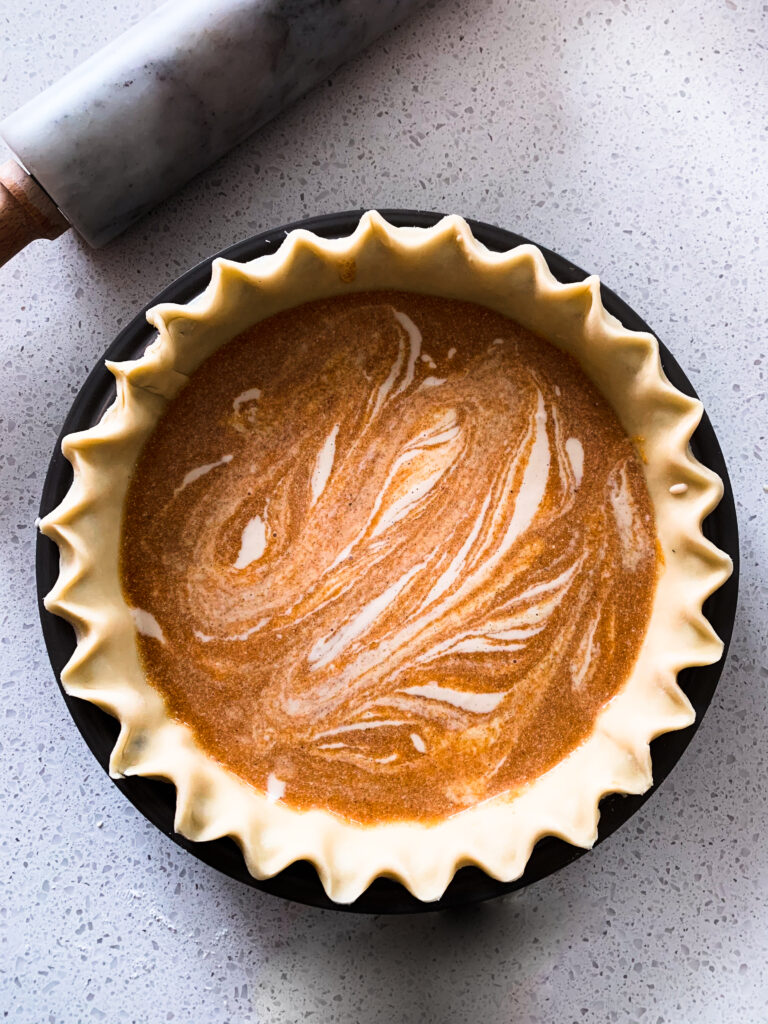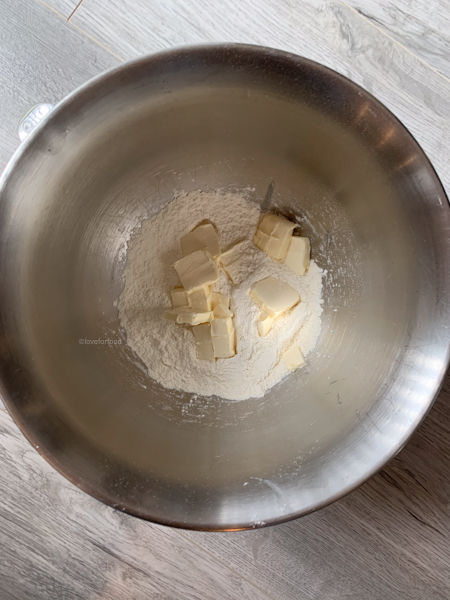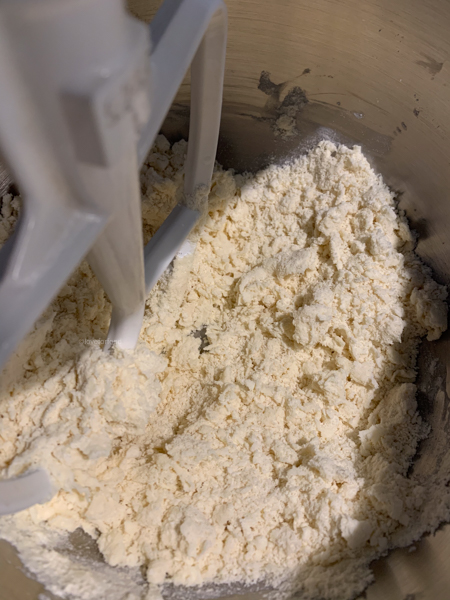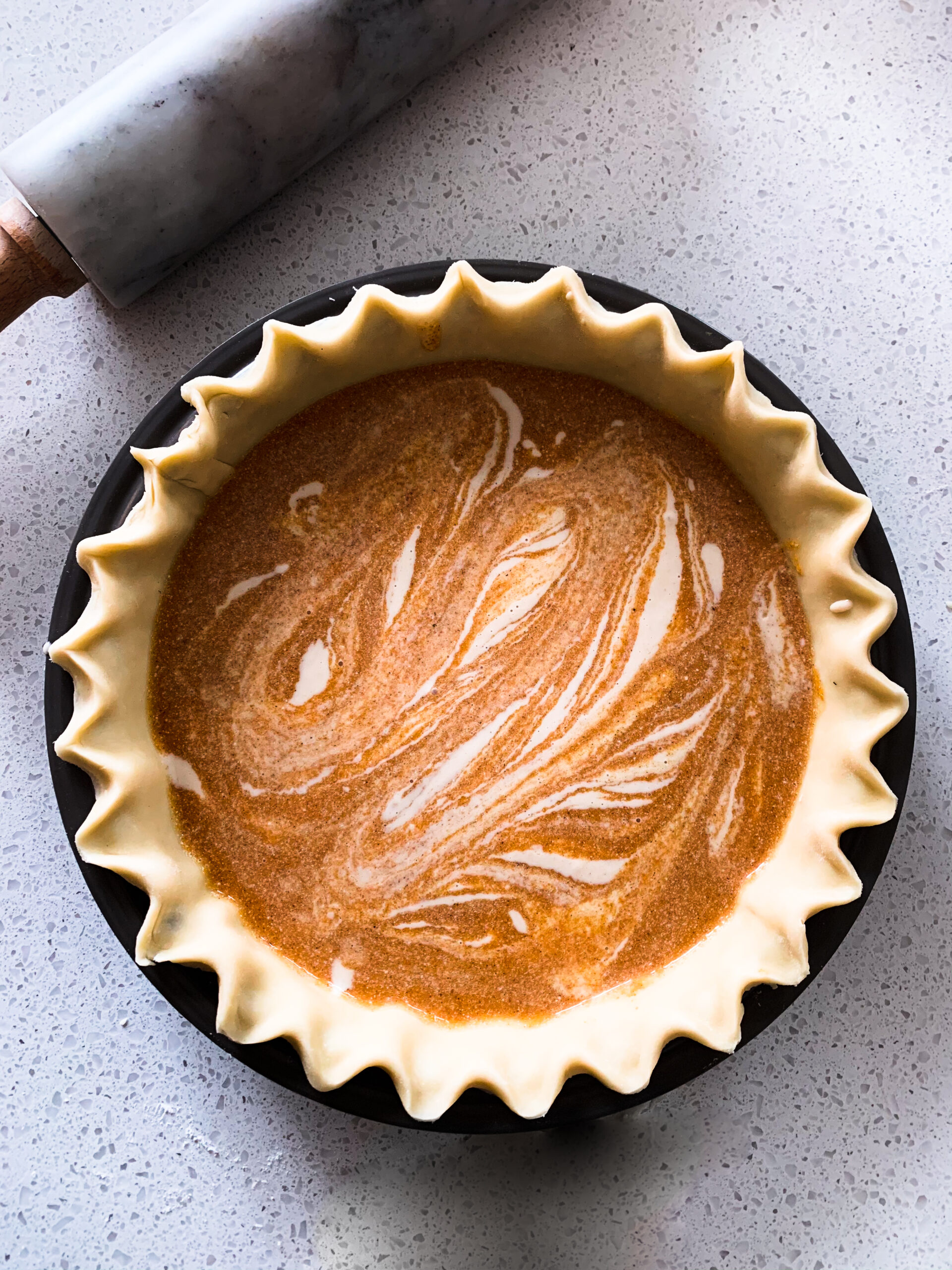This vegan pie crust is flaky, dairy-free, AND sugar-free! The little pop of flavour comes from the vinegar in the dough and the flecks of vegan butter incorporated into the flour. I won’t give you some long winded story on how I got to this recipe. Only that I asked my mom what she did to her pie dough to make it taste so good and to my surprise she said vinegar.

I’ve adapted Smitten Kitchen’s pie crust recipe, almost combining her tougher crust with her softer crust to land in the middle, while taking adaptations from my mom and what has worked best for me.
This recipe makes one double crust pie or two single crust.
The best vegan butter I’ve found thus far (that are inexpensive) have been Becel’s vegan unsalted baking sticks, vegan unsalted butter block, and Melt’s vegan baking sticks. I’ve heard some amazing things about some other brands, but they are twice as much money as Becel. If you are looking to avoid palm oil, a more expensive vegan butter may be what you choose. Any firm vegan butter would work great in this recipe.
To Make Vegan Pie Crust:
In the bowl of a stand mixer, measure out the flour and salt before cubing in the small pieces of unsalted vegan butter (if using salted just reduce the salt a bit). Typically 150 g (2/3 cup) of salted butter contains 1 g (1/8 tsp) of salt.
Stand-Mixer Instructions
In the stand mixer with the paddle attachment set the mixer to medium-low speed and let the paddle break up the butter pieces. It should become flaky and appear a bit wet but not come together.
With the stand mixer still running, add in the 2 tsp of white vinegar along with 3-5 tbsp of cold water. If necessary, add 1 tbsp at a time of additional water until the dough reaches a soft, pliable consistency. It shouldn’t be stiff or wet, but somewhere in between.


By Hand Instructions
In a medium bowl, whisk together the flour and salt and cube in very small pieces of very cold butter. Using your fingers, squish the pieces of butter into the flour to flatten them and break them apart. You can leave it moderately chunky, it’s only more flaky, but try not to leave any large pieces that are not flattened. It usually takes me a few minutes and I prefer the flavour of hand-mixed dough to the mixer! If the butter begins to melt, put the dough mixture into the fridge to chill for 15 minutes.
Once the butter is incorporated, using a fork, stir in the water and vinegar mixture. You may need to add 1-2 tbsp more water. The dough should come together when pressed but not be wet.
Rest the Dough
Wrap tightly in plastic wrap and place in the fridge for 1 hour to relax the gluten and keep the butter from melting.
After an hour has passed (or even a couple of days), unwrap the dough and place it on a well floured surface before rolling out the dough. You do not want it to stick to the counter or your rolling pin.
Roll it out and Use it!



Use the vegan pie crust as desired in pie, tarts, and more!
Looking for More Vegan Baking?
Try my vegan savoury breakfast scones, garlic naan, and sandwich buns. This can be used in any recipe calling for a pie crust/pie dough. Try using it to make a vegan mushroom wellington or as a crust for a pot pie.
Recipe Card:

The BEST Vegan Pie Crust
Ingredients
Method
- In the bowl of a stand mixer, measure out the flour and salt before cubing in the small pieces of unsalted vegan butter (if using salted just reduce the salt a bit). Wrap tightly in plastic wrap and place in the fridge for 1 hour to relax the gluten and keep the butter from melting.
- Attach the paddle attachment and set the mixer to medium-low speed and let the paddle break up the butter pieces. It should become flaky and appear a bit wet but not come together.
- With the stand mixer still running, add in the 2 tsp of white vinegar along with 3 tbsp of cold water. If necessary, add 1 tbsp at a time of additional water until the dough reaches a soft, pliable consistency. It shouldn’t be stiff or wet, but somewhere in between.
- In a medium bowl, whisk together the flour and salt and cube in very small pieces of very cold butter. Using your fingers, squish the pieces of butter into the flour to flatten them and break them apart. You can leave it moderately chunky, it’s only more flaky, but try not to leave any large pieces that are not flattened. It usually takes me a few minutes and I prefer the flavour of hand-mixed dough to the mixer! If the butter begins to melt, put the dough mixture into the fridge to chill for 15 minutes.
- Once the butter is incorporated, using a fork, stir in the water and vinegar mixture. You may need to add 1-2 tbsp more water. The dough should come together when pressed but not be wet.
- Wrap tightly in plastic wrap and place in the fridge for 1 hour to relax the gluten and keep the butter from melting.
- After an hour has passed (or even a couple of days), unwrap the dough and place it on a well floured surface before rolling out the dough. You do not want it to stick to the counter or your rolling pin.
- Use the dough as desired.

Recent Comments